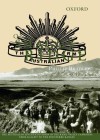On Shaggy Ridge
Written by: Phillip Bradley,
Oxford University Press, 2004,
ISBN: 9780195551006, 240 pp.
Reviewed by: John Donovan
It is possible to argue that this book need not have been written, for the events covered have been fully described in the official history. However, one must admit that World War II official histories do not adorn many bookcases these days, and it seems probable that the copies in libraries spend very little time in the hands of borrowers.
This book, then, joins others in the Army History series (and some published under other aegis, such as Peter Stanley’s book on Tarakan, and Peter Brune’s works on the Papuan campaign) that provide an important service by bringing Australia’s military history to the general reader. Such books also serve as at least a partial anti-dote to the limited academic study of military history in modern-day Australia.
To some degree, On Shaggy Ridge follows the C. E. W. Bean tradition, focusing on the men in the front line, with the activities of senior commanders and staff, and logistical matters, little more than ‘noises off’ as that charming theatrical expression goes. This is a strength—and one that confirms the book’s role in complementing rather than duplicating the narrative in the official history. However, while the focus on the men in the sections and platoons provides a solid understanding of the physical difficulties of the Shaggy Ridge battles, perhaps added depth might have lent a better context to the story.
The focus on the front line, however, does allow the author the opportunity to introduce some personalities who are not well known in Australia. Prominent among these is the American pilot Tommy Roberts, who decided to spend some leave in the front lines while awaiting conversion training in Port Moresby. His performance with the 2/16th Battalion (surely well above and beyond the call of duty for an airman) earned him a Silver Star. Ironically—and tragically—having returned from Shaggy Ridge, he died in an air crash just two days after his first conversion flight.
The book makes a number of references to the difficulties experienced by ‘out of state’ reinforcements in integrating into battalions with their own proud (but sometimes parochial) histories. The strength of the unit bond that resulted from the territorial recruitment of combat units has been highlighted often, including recently by Ian Kuring in his history of Australian infantry. One has to wonder, therefore, why this bond appears to have been ignored by the posting authorities in the latter part of World War II. Surely the unnecessary tension that this posting policy caused could have been avoided in time of war?
It is not as if the numbers were minor. As an example, Bradley notes that some 600 men came from the disbanded 16th Motor Regiment to the 2/16th Battalion. This effectively converted it from a West Australian unit to a New South Wales unit. Again, while Queenslanders from the 5th Motor Regiment went to the Queensland 2/9th Battalion, other Queenslanders from the 11th Motor Regiment went to the South Australian 2/10th Battalion, which also had a platoon mostly comprising men from Bungendore in New South Wales!
Still, the Adjutant General’s Branch was responsible for worse errors during World War II, such as the despatch of untrained reinforcements to Singapore and the botched formation of the 39th, 49th and 53rd Battalions. The question remains, however, as to whether these various actions were the result of indifference, indolence, ignorance or incompetence. The ruthlessness with which the war against Japan was fought is clear from this book. The reluctance to take prisoners and the casual treatment of dead Japanese soldiers would cause agitation in some quarters if repeated today. However, in the context of the times, and given the propensity of wounded Japanese soldiers to try to take someone with them if at all possible, the actions are fully understandable. Different times, different mores.
Bradley suggests that the extensive use of air power to both deploy and support ground troops in the Markham/Ramu Valley campaign heralded the future of warfare. Perhaps so—certainly it had its reprise in Slim’s campaign in Burma, and later with the development of air mobility in Vietnam. However, the recent campaigns in the Middle East could be seen as a reminder that circumstances dictate the relevant tactics, and flexibility must remain a military virtue.
Some tighter editing might have been helpful. As a very simple example, the Studebaker trucks in which men of the 2/33rd Battalion sat on page one had become Chevrolets by page two! Such minor issues do not, however, detract seriously from the quality of the book.
The Army History program has so far produced books covering the activities of the 7th Division (this volume, as well as indirectly in the biography of Lavarack), the 8th Division (Against the Sun), and the 9th Division (Alamein, Bravery Above Blunder, and indirectly in the biography of Morshead). Perhaps it is time for something on the 6th Division?

